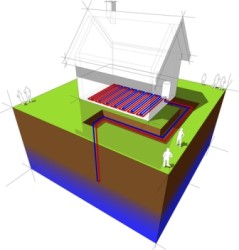Sizing A Heat Pump: The First Step When Installing A New System
When it comes to HVAC systems, bigger is not always better. In fact, an oversized heat pump increases the initial purchase price, reduces efficiency, increases energy costs, and may compromise indoor comfort. That means sizing a heat pump properly is essential in achieving a comfortable interior and lower energy costs.
The best way to size a heat pump is by using a sizing guide called Manual J, which is produced by the Air Conditioning Contractors Association (ACCA). When you hire an HVAC contractor to help with sizing a heat pump, insist that they perform load calculations based on the Manual J procedure.
Load calculations
Manual J considers a variety of heating and cooling load components when sizing a heat pump. These include:
- Wall, ceiling, window and floor area
- Insulation values throughout the home
- Duct air leakage
- Building size and orientation
- Roof surface color
- Occupancy level
Manual J computer programs allow technicians to enter their findings and simplify the load calculation process.
Making energy-efficient upgrades
As you go about sizing a heat pump, it could be in your best interest to make improvements that increase your home’s energy efficiency. After all, the more efficient your home is, the smaller the heat pump you can get away with. Some improvements include:
- Adding wall and attic insulation
- Sealing air leaks in your home’s outer envelope
- Replacing single-pane windows with triple-pane, low-e windows
- Sealing ductwork that runs through unconditioned spaces
- Adding window overhangs to shade the interior
Heat pump considerations
When a technician goes to size your heat pump and its corresponding components, keep these points in mind:
- Heat pumps require larger ducts than other types of central heating systems.
- Heat pumps require a special programmable thermostat that gives the system ample time to recover from setback periods.
- Florida’s warm climate allows your technician to install the smallest electric resistance backup heat available to reduce operating costs when it activates on those rare chilly mornings in Palm Beach.
For more information about sizing a heat pump using Manual J, please contact NisAir Air Conditioning and Heating. We proudly serve Martin, Palm Beach, St. Lucie and Indian River counties.

